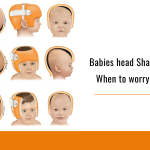
Do you or a loved one have scoliosis and worry that surgery might be your only option? While spinal surgery is often associated with severe cases, not all scoliosis patients require invasive intervention.
In fact, many people, especially adults with mild or moderate curves, can find significant relief through non-surgical treatments tailored to their specific needs.
This blog will help you understand the meaning of scoliosis, its causes, and modern scoliosis treatments without surgery. Whether you’re seeking options for yourself or a family member, this guide offers valuable insights to help you make informed decisions.
What Is Scoliosis?
Scoliosis meaning refers to a sideways curvature of the spine. The term comes from the Greek word skolios, meaning “crooked.” It’s not a disease, but a spinal deformity that can occur at any age, most often during adolescent growth spurts.
Scientifically, scoliosis is a medical abnormality in which the spine curves sideways, thereby creating an “S” or “C” shape instead of maintaining a straight, vertical alignment.
The abnormality of the spine can range from mild to severe and affect the posture, breathing, mobility, and overall spinal health.

What Causes Scoliosis?
Understanding what causes scoliosis is essential in managing it effectively. While the exact cause is often unknown, scoliosis can result from:
- Idiopathic causes (most common): No identifiable cause; typically develops in teenagers.
- Congenital scoliosis: Caused by spinal abnormalities present at birth.
- Neuromuscular scoliosis: It is linked to abnormalities such as cerebral palsy, muscular dystrophy, and injury to the spinal cord.
- Degenerative scoliosis: Occurs in adults due to ageing and degeneration of spinal discs and joints.
Scoliosis treatment without surgery for adults focuses on symptom relief and curve management, especially for degenerative and mild scoliosis.

When Is Scoliosis a Problem?
Scoliosis is not always a medical emergency. In fact, mild scoliosis often goes unnoticed until a routine physical exam or X-ray detects it. However, untreated scoliosis can lead to:
- Chronic back or neck pain
- Muscle fatigue
- Postural imbalances
- Breathing difficulties (in severe cases)
Prompt assessment and intervention can prevent curve progression and minimise long-term complications, without necessarily requiring surgery.
The Emotional Impact of Living with Scoliosis
Scoliosis can affect more than the spine; it can significantly influence a person’s mental and emotional well-being.
- Teenagers with visible spinal curves or braces may struggle with body image problems, low self-esteem, and social anxiety.
- Adults often face chronic pain, fatigue, and mobility limitations, which can lead to frustration, stress, or even depression.
- Suffering individuals can feel isolated or depressed. They can even experience:
- Anxiety and mood swings
- Poor sleep
- Decreased participation in social or physical activities
- Negative self-perception
- Empowering patients with knowledge, community support, and customised treatment plans helps reduce feelings of helplessness.
- Mental health support like counselling, cognitive behavioural therapy (CBT), and group therapy can help patients cope effectively.
- Incorporating mindfulness, yoga, journaling, or breathing exercises can also support emotional regulation.
- Physical improvements through non-surgical treatments often lead to a boost in emotional well-being, confidence, and daily motivation.

Scoliosis Treatment Without Surgery
Many people, especially adults with scoliosis, can manage their condition effectively without surgical intervention.
Here are some proven non-surgical scoliosis treatment options that aim to decrease the symptoms, improve functions, and improve the quality of life:
It focuses on:
- Strengthening the core and spinal muscles
- Improving postural alignment
- Increasing flexibility and range of motion
- Reducing asymmetrical muscle strain
Evidence-based programmes like the Schroth Method are particularly effective. This method uses posture correction, breathing techniques, and muscle training to de-rotate the spine and reduce curvature.
2. Chiropractic Adjustments
Chiropractic care offers relief from discomfort caused by scoliosis.
- Reduce joint restrictions
- Alleviate muscle tension
- Improve spinal mobility
- Promote better posture
Chiropractic therapy does not cure scoliosis, but it can enhance the overall spinal function and manage symptoms effectively.
3. Bracing
Bracing is typically used in growing adolescents to prevent progression of the curve. Some custom scoliosis braces may benefit adults with flexible curves. Bracing helps:
- Stabilise the spine
- Prevent further curvature
- Relieve mechanical strain
4. Pain Management Techniques
- Non-steroidal anti-inflammatory drugs (NSAIDs)
- Muscle relaxants
- Hot and cold therapy
- Massage therapy and acupuncture
The above method targets inflammation and muscle spasms to improve daily functioning.
5. Lifestyle Modifications
Simple changes in daily habits like:
- Ergonomic workstations for reducing poor posture
- Low-impact activities like swimming or yoga
- Maintaining a healthy body weight
- Supportive mattresses and footwear
Scoliosis Treatment Without Surgery for Adults
Adults with scoliosis have different needs than children. They may experience degenerative scoliosis due to disc wear or spinal arthritis.
For adults, a multi-disciplinary approach involving physiotherapists, chiropractors, orthopaedists, and pain specialists can ensure holistic care for the spine.
When Is Surgery Considered?
Scoliosis surgery is recommended for:
- Severe curves (typically over 45–50 degrees)
- Rapid curve progression despite conservative treatment
- Structural deformities causing nerve compression or breathing issues
You may benefit from scoliosis treatment without surgery, especially with consistent therapy and follow-up.
Why Choose Xtremity for Scoliosis Treatment Without Surgery?
When it comes to managing scoliosis non-surgically, choosing the right care partner can make all the difference. Xtremity offers a specialised, patient-centric approach designed to treat not just the spine, but the whole person.
What Makes Xtremity Stand Out?
- Expert-Led Non-Surgical Care
Access experienced professionals trained in conservative scoliosis management, including orthotists.
- Customised, Multi-Modal Treatment Plans
Every patient receives a tailored plan by communicating or steering them to physical therapy, posture correction, and mobility strategies.
- Focus on Long-Term Relief and Functionality
We go beyond symptom relief to enhance daily mobility, posture, and spinal health through sustainable interventions.
- Advanced Techniques Like Schroth-Based Therapy
We integrate proven research-based techniques, like the Schroth Method, for targeted spinal de-rotation and alignment.
- Holistic and Compassionate Care
Mental and emotional well-being is woven into every treatment plan.
- Support for All Ages and Curve Types
Whether you have mild scoliosis, degenerative adult scoliosis, or postural imbalances, Xtremity can help.
With the right guidance, therapy, and support, many individuals can live with scoliosis treatment without surgery.
Whether you’re suffering from mild scoliosis or age-related spinal changes, early intervention can make a significant difference.
Ready to Take the First Step?
Reclaim comfort, mobility, and confidence without surgery.
Book a consultation today and experience scoliosis care.

FAQ
While scoliosis may not be fully “corrected” without surgery, many patients can reduce curvature, relieve pain, and improve function through non-surgical techniques like physical therapy, chiropractic care, and bracing.
- Uneven shoulders or hips
- One shoulder blade is more prominent than the other
- Back pain or stiffness
- Uneven waistline or rib cage rotation
- Leaning to one side
Early detection is key, especially if these signs appear during adolescence or worsen with age.
Yes, exercise tailored for scoliosis can improve flexibility, posture, and muscle balance. While it may not reverse curvature completely, structured movement therapy often reduces pain and prevents further progression.
The most common cause is idiopathic scoliosis, especially in adolescents. In adults, scoliosis is often caused by spinal degeneration, or degenerative scoliosis, resulting from age-related disc and joint changes.
About Us
Xtremity Prosthetics and Orthotics is a specialized health clinic where treatment is provided by a specialized team which comprises allied health professionals as well as medical professionals giving a multidisciplinary approach towards prosthetic and orthotic rehabilitation care.



